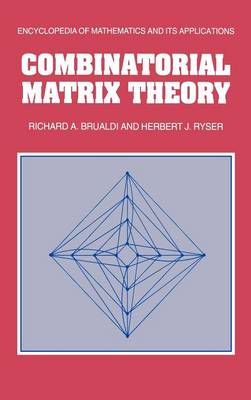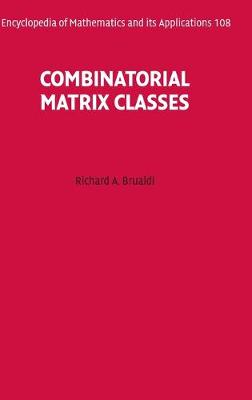Encyclopedia of Mathematics and its Applications
2 total works
This book, first published in 1991, is devoted to the exposition of combinatorial matrix theory. This subject concerns itself with the use of matrix theory and linear algebra in proving results in combinatorics (and vice versa), and with the intrinsic properties of matrices viewed as arrays of numbers rather than algebraic objects in themselves. There are chapters dealing with the many connections between matrices, graphs, digraphs and bipartite graphs. The basic theory of network flows is developed in order to obtain existence theorems for matrices with prescribed combinatorial properties and to obtain various matrix decomposition theorems. Other chapters cover the permanent of a matrix, and Latin squares. The final chapter deals with algebraic characterizations of combinatorial properties and the use of combinatorial arguments in proving classical algebraic theorems, including the Cayley-Hamilton Theorem and the Jordan Canonical Form. The book is sufficiently self-contained for use as a graduate course text, but complete enough for a standard reference work on the basic theory. Thus it will be an essential purchase for combinatorialists, matrix theorists, and those numerical analysts working in numerical linear algebra.
A natural sequel to the author's previous book Combinatorial Matrix Theory written with H. J. Ryser, this is the first book devoted exclusively to existence questions, constructive algorithms, enumeration questions, and other properties concerning classes of matrices of combinatorial significance. Several classes of matrices are thoroughly developed including the classes of matrices of 0's and 1's with a specified number of 1's in each row and column (equivalently, bipartite graphs with a specified degree sequence), symmetric matrices in such classes (equivalently, graphs with a specified degree sequence), tournament matrices with a specified number of 1's in each row (equivalently, tournaments with a specified score sequence), nonnegative matrices with specified row and column sums, and doubly stochastic matrices. Most of this material is presented for the first time in book format and the chapter on doubly stochastic matrices provides the most complete development of the topic to date.

